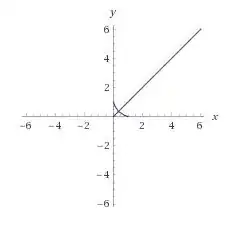Another Solution
Since $x^x=y^y$, hence ${\rm d}x^x={\rm d}y^y,$ i.e. $x^x(\ln x+1){\rm d}x=y^y(\ln y+1){\rm d}y.$ We obtain the derivative $$\frac{{\rm d}y}{{\rm d}x}=\frac{x^x(\ln x+1)}{y^y(\ln y+1)}=\frac{\ln x+1}{\ln y+1}.$$
Notice that $$x_p=y_p,$$ and $$\dfrac{{\rm d}y}{{\rm d}x}\bigg|_{x=x_p}=-1.$$ Thus, we can set up an equation as follows $$\frac{\ln x_p+1}{\ln x_p+1 }=-1.$$ Therefore,$$\ln x_p=-1.$$
As a result, $$x_p=\frac{1}{e}.$$ It follows that $$(x_p,y_p)=\left(\frac{1}{e},\frac{1}{e}\right).$$
Am I right? Indeed,there exists a flaw here, because the expression of $\dfrac{{\rm d}y}{{\rm d}x}=\dfrac{\ln x+1}{\ln y+1}$ has no definition at $x=y=\dfrac{1}{e}$. How to remedy the problem?
